Tamarind… Que? Why rural expats head to the Costa del Sol to stock up on exotic cooking ingredients
Thursday, August 25, 2016
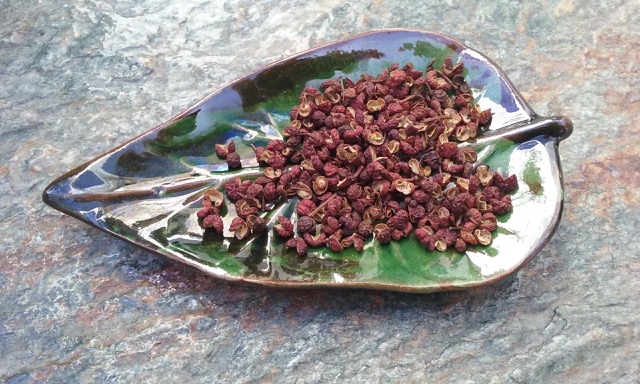 The Spanish love their Spanish food and who can blame them. We enjoy tapas as much as the next person, but there is something to be said for variety. I am talking about gastronomic and ethnic variety with exotic flavours from faraway lands that challenge and stimulate your taste buds. The Spanish love their Spanish food and who can blame them. We enjoy tapas as much as the next person, but there is something to be said for variety. I am talking about gastronomic and ethnic variety with exotic flavours from faraway lands that challenge and stimulate your taste buds.
My husband and I moved from a city of millions to a small town off the major Andalucían freeway system. In Canada, we were used to having a dozen Chinese restaurants, a handful sushi places, a couple of Falafel places, in addition to Thai, Indonesian, Malay, Greek, Italian, French, Afghani and vegan restaurants (anything but Canadian…), all within walking distance of our Kitsilano home. Though our new hometown has more than 150 eating establishments, Ronda has only a handful places that serve what can be remotely defined as foreign food, the less interesting being pizza joints, the most ‘exotic’ ones being two very drab looking Chinese places that only seem to tempt the Chinese tourist-bus crowds. (I have sworn to my husband that I will never put my feet in there, much rather having a liquid lunch in the scuzzy Jerez bar next door.) Unfortunately our only Indian place, which actually served an excellent Rogan Josh curry, is gone. Alas, our need for spicy, exotic foods and flavours has to be satisfied elsewhere.
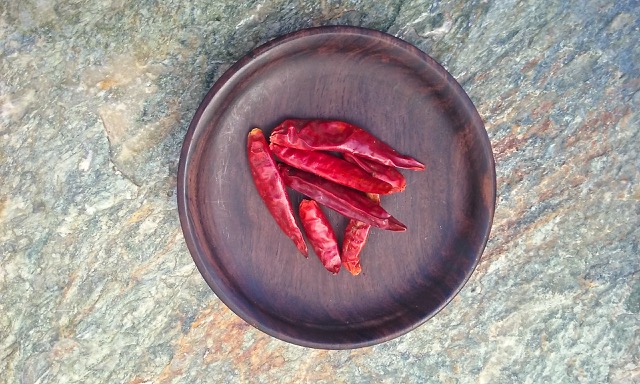 Ronda is of course not completely off the map. All the supermarkets will have soy sauce and a German supermarket chain have some vegetarian, wheat-free and even the occasional ethnic fare. But not enough for my hubby, who loves his Indonesian Rendang curry almost as much as he loves his native Mexican tacos. I said almost… Our immediate solution was to tell friends who would come to visit from abroad to bring us spices. Unfortunately, one cannot count on this type of vicarious importation. We also stocked up when we went to visit the family in Norway, as Oslo seems to have more ethnic food than all of Spain combined. Yet, this also wasn’t a viable solution in the long run, and who want to risk getting black bean sauce spilled in one’s suitcase…So, the solution was to go to the coast, as in Costa del Sol, just like we do when we need to buy good quality paint, or special tools or something for the house. Ronda is of course not completely off the map. All the supermarkets will have soy sauce and a German supermarket chain have some vegetarian, wheat-free and even the occasional ethnic fare. But not enough for my hubby, who loves his Indonesian Rendang curry almost as much as he loves his native Mexican tacos. I said almost… Our immediate solution was to tell friends who would come to visit from abroad to bring us spices. Unfortunately, one cannot count on this type of vicarious importation. We also stocked up when we went to visit the family in Norway, as Oslo seems to have more ethnic food than all of Spain combined. Yet, this also wasn’t a viable solution in the long run, and who want to risk getting black bean sauce spilled in one’s suitcase…So, the solution was to go to the coast, as in Costa del Sol, just like we do when we need to buy good quality paint, or special tools or something for the house.
In the nearly four years we have lived here, we have driven, eaten and scoured our way through the independent territory of Andalucia in search of ethnic and foreign ingredients. In an emergency, we can recommend Carrefour or the food court at Corte Inglés. In spite of its deceiving name (meaning the English Cut, referring to an Anglo style of tailoring), the latter is a Spanish chain, offering a decent selection of foreign ingredients. We have found some spices in Malaga’s market and a better selection still in the open market in Cádiz’ old quarter. Last time we were there, we even managed to find Sichuan pepper. Quite an exciting discovery!
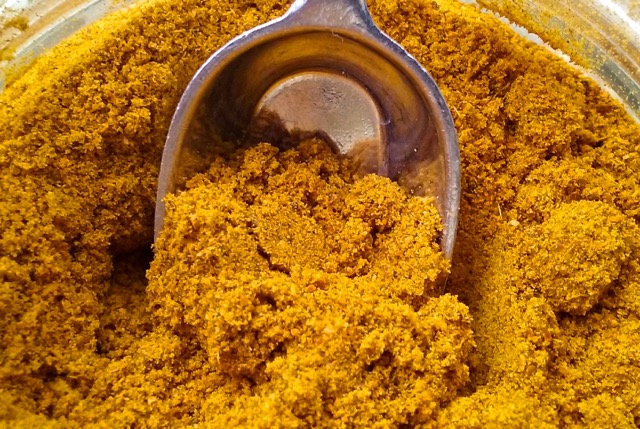 It wasn’t until we discovered an unpresumptuous Asian food store on a side street with near-impossible parking in Arroyo de la Miel in Benalmadena that we felt we had hit the jackpot. Saborasia(Asian Flavour) as it is called, is run by Karishma. Originally from Indonesia, she tends to the store with her Spanish husband, while her Japanese mom sometimes may be seen sitting in a plastic chair outside with a grandchild. We immediately knew we had come to the right place, as not only could we find the ingredients we were looking for, but Karishma actually knew what she (and we…) were talking about! She even gives Asian cooking courses on the weekends! It wasn’t until we discovered an unpresumptuous Asian food store on a side street with near-impossible parking in Arroyo de la Miel in Benalmadena that we felt we had hit the jackpot. Saborasia(Asian Flavour) as it is called, is run by Karishma. Originally from Indonesia, she tends to the store with her Spanish husband, while her Japanese mom sometimes may be seen sitting in a plastic chair outside with a grandchild. We immediately knew we had come to the right place, as not only could we find the ingredients we were looking for, but Karishma actually knew what she (and we…) were talking about! She even gives Asian cooking courses on the weekends!
For the first time since we came to Spain, we could have actual (though frozen, for now) lemongrass, lime leaf and galangal in our Thai Tom Yum soup. I could finally supplement my dwindling supply of Japanese Genmaicha tea. My husband ogled over the Oyster and Hoisin sauces, chili oils and his beloved curries. They had Asian rice and noodles of any imaginable type and size and of course endless brands of soup mixtures. Almost like shopping in Vancouver, they had good quality aged miso, gari (picked ginger) and wasabi. And even Sake, which you have to get at the liquor store back in Canada. As we stacked our purchases on the counter, we also spotted ginger candy (great for car sickness and sugar-lows during hikes), and added them and coconut milk to our ever-growing stash. I would have included a cool Asian tea set she had behind the cash register as well, but by this time our bags were full and our wallets empty. Well, well, there is always next time.
We haven’t yet tried Karishma’s Asian cooking classes. My husband still ‘threatens’ to send me away so I can learn to cook, as I suppose he can't see the great benefit of having a wife who prefers to style food, rather than to cook it. For now, we drive down to Saborasia whenever we get low in supplies. And one of these fine days her Asian tea set is coming with me so I can drink my Lapsang Souchong in style.
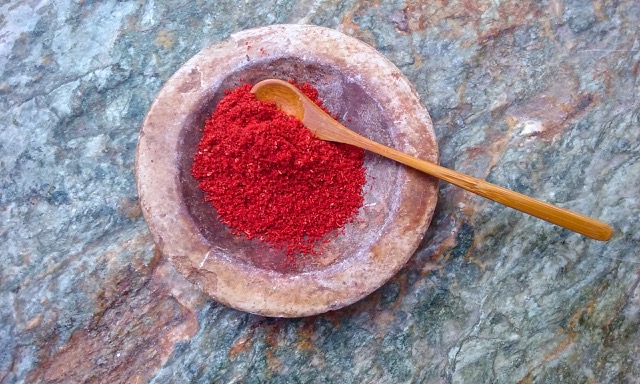
 1
Like
Published at 8:03 PM Comments (8)
1
Like
Published at 8:03 PM Comments (8)
Rural Andaluz Hashtag Virgin gets a Lesson in the Lessons of Instagram
Thursday, August 18, 2016
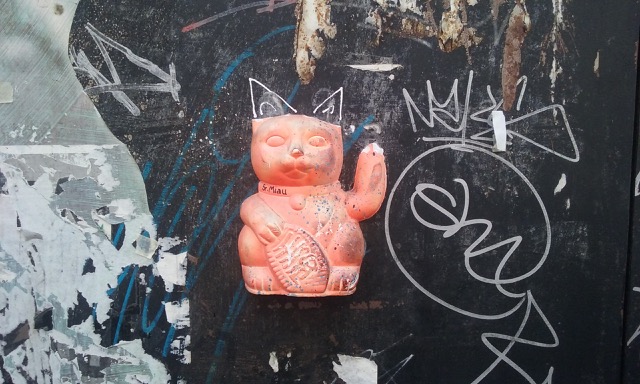 I am not looking for Pokémon. In fact, I will gladly admit that when it comes to the latest in technology and social media marvels, I am a deliberate dinosaur. I waited the longest possible time before I finally broke down and exchanged my pager for a cell phone, some 20 years ago. People were using computers and digital cameras for years before I acquired them and I still and hopefully always will prefer old-fashioned books to a Kindle. Indeed, since I have never been stuck on a Survival-type desert island, only allowed to bring three personal things and a TV crew, I have never had much of a problem with access to the printed word. I am not looking for Pokémon. In fact, I will gladly admit that when it comes to the latest in technology and social media marvels, I am a deliberate dinosaur. I waited the longest possible time before I finally broke down and exchanged my pager for a cell phone, some 20 years ago. People were using computers and digital cameras for years before I acquired them and I still and hopefully always will prefer old-fashioned books to a Kindle. Indeed, since I have never been stuck on a Survival-type desert island, only allowed to bring three personal things and a TV crew, I have never had much of a problem with access to the printed word.
People have tried to talk me into getting on Facebook forever. They argue that I am loosing out on seeing shots of old school friends, that I am cut-off from ‘reality’, that I won’t know what my son is doing and that it is my duty to friends and family to share my photos with them. I have always stood steadfast by my decision. I do not want to be on Facebook. Frankly, I don't need to know what my school friends look like and would probably not recognize them anyhow. I’ll never know what my son is up to all the time whether I am on Facebook or not. And I think it is my duty NOT to expose the world to photos of my loved ones and myself, posing while eating, traveling and what have you not. People can post whatever they like, but in my opinion and possibly mine alone, there are enough people out there without me posting my ugly grin every nanosecond, as well.
The other day I was chatting with my son, and he said that I really should get an Instagram account in conjunction with launching my new web site and design business here in Spain. (Coming soon…) “What’s Instagram?”, I asked and my son (probably eye rolling) bombarded me with things like Hashtags and other words that some middle-aged women like myself may not particularly want to know. Yet, I decided to give my lad the benefit of the doubt and did some googling on the subject.
Since the name started with Insta, I thought that a couple of Youtube videos would teach me the ropes and make me determine whether Instagram was for me. Cut to three hours later. I was still on Youtube, having watched at least a handful Instagram-for-Dummies and Instagram-101 tutorials. I was led onto more advanced Tips and Trends on how to grow your followers and how to become an Instagram success while earning millions in the process. As if… What struck me was that the deeper I got into my research, the younger were the self-proclaimed ‘specialists’. I don't know why this particular fact should surprise me, seeing that most CEOs of multinational companies and many heads of states are a decade or two younger than me. I suppose anyone can be a specialist when it comes to new technology and the majority of cutting-edge social media Apps are probably invented by teens. So I deferred to the specialists:
First, there was the typical squeaky-voiced platinum blonde Californian, using all of her 21 years of vast life-experience, telling me what I must not do, such as not to follow too many people nor to post any old pictures. “I mean, It’s Insta-gram,” she hoity-toity-ed, very close to adding a “Duh!”
Then there was the hip Asian Instagram brainchild, babbling faster than a Spanish sports commentator, giving me the 10 or was it the 101 ways to gain business success with Instagram. I didn’t doubt that her advice had some credit, I was just curious as to how many businesses she had had time to run?
Next was the a slightly dubious looking Baltic fellow telling me how to instantly gain millions of followers, as he undoubtedly have, by clicking ‘Follow’ on every link possible and then immediately de-clicking them. Why would anyone want to ‘trick’ people into following them, unless their sole goal is to brag about how many followers they have? I am not in need of company, nor do I need a following, virtual or otherwise.
The last ‘expert’, and this was the final straw, was a pre-pubescent boy lecturing the world on his Instagram success, while being filmed against what looked like the tool wall in dad’s garage in the dullest of suburbs. He told the World-Wide-Web and all of us listeners out there that one simply HAD to be funny, like, to be on Instagram, which he probably thought his boofy 1950s coif made him, though to me he was rather pathetic. There clearly must be something in the saying that ‘Youth is wasted on the young’. The kid went on and on about how being good-looking helped, like, and how, like, he had gained his vast popularity, like, with…
I could listen to no more.
In spite of the specialists, I did make an Instagram account and even managed to add a few photos and hashtags. “Are hashtags the same as the tags we used before?”, my husband asked me. Checking the Internet, I discovered that it is actually so. A hashtag is just a type of label, or tag, used on social networks and blogs etc., making it easier for other users to find articles and posts with a specific theme or content. So, as an example, since I like rocks, (which probably is dreeeeadfully boring to most people…) I could look under hashtags such as #rocks, #stone’ and #fossils to find likeminded rock lovers.
In spite of my initial trepidation, I enjoy Instagram - for now. I have discovered amazing images of gorgeous fabrics from Pakistan, mind-blowing architecture and design from cities around the world, lovely Asian food and flower arrangements and nature shots that make your jaw drop, none of which I would have seen had I not explored Instagram. I like the fact that somebody on the other side of the globe might appreciate a photo I have taken, and visa versa. I might post pictures of Andalucian vistas, a snapshot of something I am restoring, a photograph of a texture, a colour, a ray of light or anything grabbing my passing fancy. And I won’t mind if you don’t like it. The day I feel that Instagram is too invasive or addictive, I will simply close up shop. In the meantime, I can promise you this. I will not post a single photo of dinners with friends and family. There are some things that ‘the world’ does not need to see.
Feel free to check out some of my Andalucían photos on my still-on-training-wheels Instagram page: iamasnobb
 5
Like
Published at 10:27 AM Comments (0)
5
Like
Published at 10:27 AM Comments (0)
Getting lost in the Old Kissing Corner and other alleys of Sevilla’s Judería
Friday, August 12, 2016
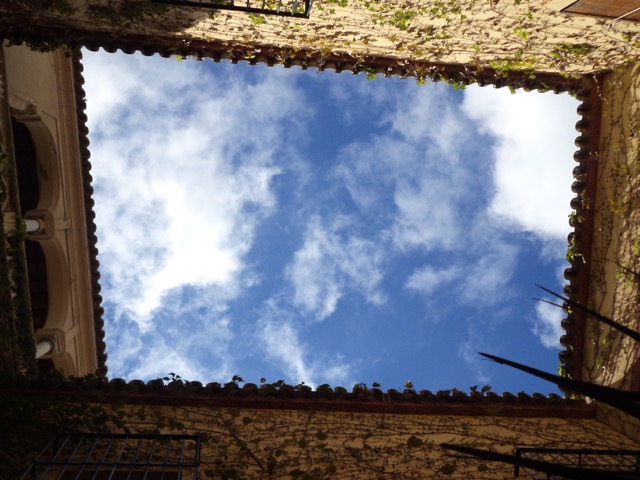 Ever since we started exploring Andalucía with the dream of moving here, I fell in love with the alleys of southern Spain. Every town here has its special charm, so I cannot say which one I like the best. Yet, when it comes to secret side streets and twisting lanes, old Sevilla is certainly high up my list. Ever since we started exploring Andalucía with the dream of moving here, I fell in love with the alleys of southern Spain. Every town here has its special charm, so I cannot say which one I like the best. Yet, when it comes to secret side streets and twisting lanes, old Sevilla is certainly high up my list.
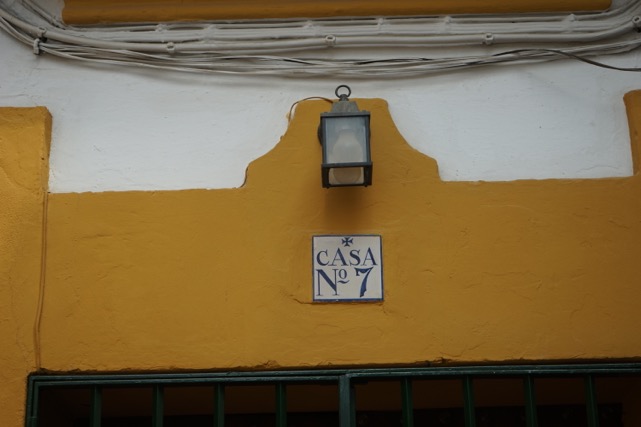 Sevilla, the capital of Andalucía is the independent territory’s most populated city, with almost 700 000 residents. With 3000 years of history, the city is a true crossroad of cultures and civilizations. While it offers a wide range of tourist attractions, to me it’s charm lies in getting lost in its lanes. Just a stone throw away from the famous La Giralda lies the entrance to the old Judería, Sevilla’s Jewish quarter. Once the second biggest in Spain (after Toledo), it was abandoned after the expulsion of the Jews in 1483 and wasn’t restored for centuries. It is now located within the barrios of Santa Cruz, Santa María la Blanca and San Bartolomé, neighbourhoods seeping in history, legends and past intrigues. Sevilla, the capital of Andalucía is the independent territory’s most populated city, with almost 700 000 residents. With 3000 years of history, the city is a true crossroad of cultures and civilizations. While it offers a wide range of tourist attractions, to me it’s charm lies in getting lost in its lanes. Just a stone throw away from the famous La Giralda lies the entrance to the old Judería, Sevilla’s Jewish quarter. Once the second biggest in Spain (after Toledo), it was abandoned after the expulsion of the Jews in 1483 and wasn’t restored for centuries. It is now located within the barrios of Santa Cruz, Santa María la Blanca and San Bartolomé, neighbourhoods seeping in history, legends and past intrigues.
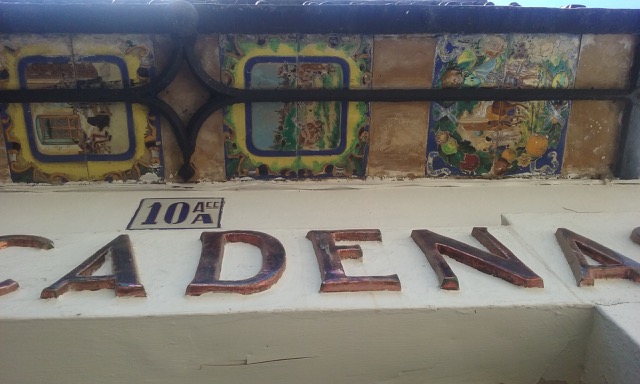 Coming through the rather hidden, domed entrance to the Juderia, the streets converts onto winding lanes and picturesque alleyways, some so narrow that one can stretch ones arms out and touch either side. This was probably how El Antiguo Rincón del Beso or the Old Kissing Corner got its name. One cannot help to envision illicit lovers on their opposing balconies stretching out to embrace. In la Judería one can still see street signs indicating the zone and the name of the specific barrio, or neighbourhood. Spanish street signs were and are still primarily made of ceramics, a medium not only readily available, but also one offering the most decorative options. Coming through the rather hidden, domed entrance to the Juderia, the streets converts onto winding lanes and picturesque alleyways, some so narrow that one can stretch ones arms out and touch either side. This was probably how El Antiguo Rincón del Beso or the Old Kissing Corner got its name. One cannot help to envision illicit lovers on their opposing balconies stretching out to embrace. In la Judería one can still see street signs indicating the zone and the name of the specific barrio, or neighbourhood. Spanish street signs were and are still primarily made of ceramics, a medium not only readily available, but also one offering the most decorative options.
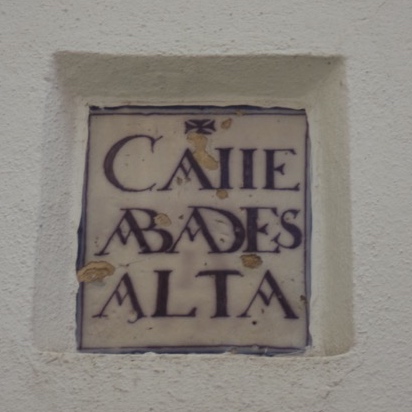 Looking at a book of street-names from the early 19th century, they certainly gave streets more interesting names in the past. As expected, there are an abundance of streets named after saints and holy orders, such as Calle Abades Alta (the Upper Abbot street) or Calle de las Capuchinas. The latter does not as one may be tempted to think refer to a street with cappuccino bars, but one where a convent for Capuchin sisters was once located. Other typical street names indicated what trade was performed there, such as Calle de los Boteros (the Street of the Wineskin Makers). Other names are directly referring to the products sold there, such as Calle de Azafran, meaning Saffron Street, probably a spice stand or Calle de la Calabaza (Pumpkin street). One can only guess that Calle de la Mosca (the Street of the Fly) was located near the fish market. Calle del Hombre de Piedra (Stone Man street) had a marble workshop, Calle de los baños was where the public baths were located and Calle de las Ropas Viejas would most certainly have been the place to go and buy used clothes. Calle de Quebrantahuesos, or the Bone-Breaker Street, might be for the service of bone setting before the city had a hospital, or maybe the street belonging to the local mafia? Looking at a book of street-names from the early 19th century, they certainly gave streets more interesting names in the past. As expected, there are an abundance of streets named after saints and holy orders, such as Calle Abades Alta (the Upper Abbot street) or Calle de las Capuchinas. The latter does not as one may be tempted to think refer to a street with cappuccino bars, but one where a convent for Capuchin sisters was once located. Other typical street names indicated what trade was performed there, such as Calle de los Boteros (the Street of the Wineskin Makers). Other names are directly referring to the products sold there, such as Calle de Azafran, meaning Saffron Street, probably a spice stand or Calle de la Calabaza (Pumpkin street). One can only guess that Calle de la Mosca (the Street of the Fly) was located near the fish market. Calle del Hombre de Piedra (Stone Man street) had a marble workshop, Calle de los baños was where the public baths were located and Calle de las Ropas Viejas would most certainly have been the place to go and buy used clothes. Calle de Quebrantahuesos, or the Bone-Breaker Street, might be for the service of bone setting before the city had a hospital, or maybe the street belonging to the local mafia?
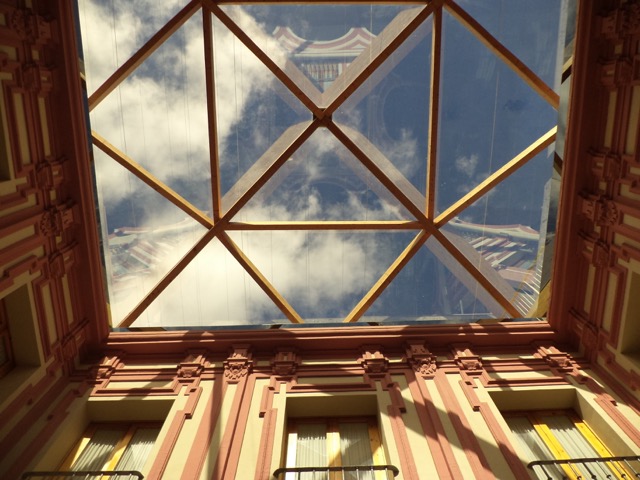 More curious names are to be found, some still in use: Calle del Dormitorio del Carmen - Carmen’s Bedroom Street (with red lights?), Calle del Caño Quebrado - the Street of the Broken Sewer, Calle de Medio Culo - Half-Ass Street and Calle de la Teta - the Street of the Tit, which allegedly referred to a peculiar shaped rock built into the wall of a house on this street. More curious names are to be found, some still in use: Calle del Dormitorio del Carmen - Carmen’s Bedroom Street (with red lights?), Calle del Caño Quebrado - the Street of the Broken Sewer, Calle de Medio Culo - Half-Ass Street and Calle de la Teta - the Street of the Tit, which allegedly referred to a peculiar shaped rock built into the wall of a house on this street.
In Sevilla, like all through Andalucía there are many street-names of Arab origin, from the seven centuries that the territory was under Moorish rule. A common example is Calle de la Medina, which means Town or Walled-In Town in Arab. Others probably refer to a later period of religious conflict, such as Calle del Moro Muerto, or the Dead Moor Street. Sevilla’s street names sometimes bring back local legends. One of the more curious names in my books is Calle Cabeza del Rey Don Pedro, or the Street of King Don Pedro’s Head. Apparently this particular royal has a tendency to escape in the night to look for, well, what one looks for in the night. So one can only imagine that the king’s upper appendix would have had a rather dramatic ending…
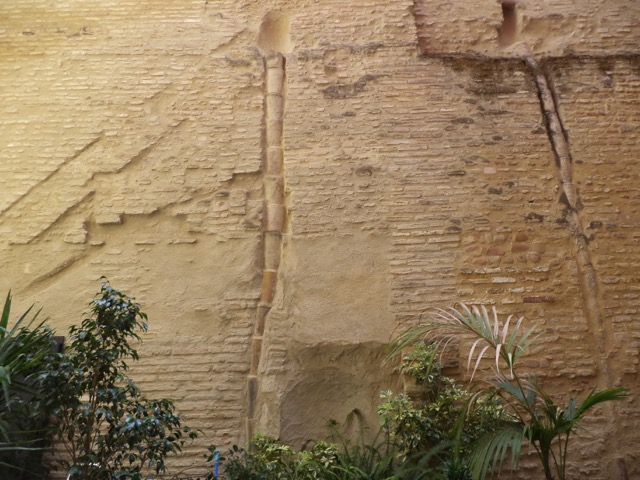 Coming back to the Judería, starting from the enchanting lane leading us into the neighbourhood, we follow Calle de la Vida (Street of Life) and appropriately continue onto Calle de la Muerte (the Street of Death). Other streets still have Hebrew names such as Calle de los Levíes, likely referring to a powerful Jewish family and the mayor of the walled in city, or Calle Jamerdana, which seem to refer to the place where the slaughterhouse left their debris. Like many towns in Spain, there is a street named Calle or Callejón de la Inquisición. Though the inquisition was celebrated in the past as what gathered Spain under the common Catholic flag, many now see it as a barbaric age of their history. Coming back to the Judería, starting from the enchanting lane leading us into the neighbourhood, we follow Calle de la Vida (Street of Life) and appropriately continue onto Calle de la Muerte (the Street of Death). Other streets still have Hebrew names such as Calle de los Levíes, likely referring to a powerful Jewish family and the mayor of the walled in city, or Calle Jamerdana, which seem to refer to the place where the slaughterhouse left their debris. Like many towns in Spain, there is a street named Calle or Callejón de la Inquisición. Though the inquisition was celebrated in the past as what gathered Spain under the common Catholic flag, many now see it as a barbaric age of their history.
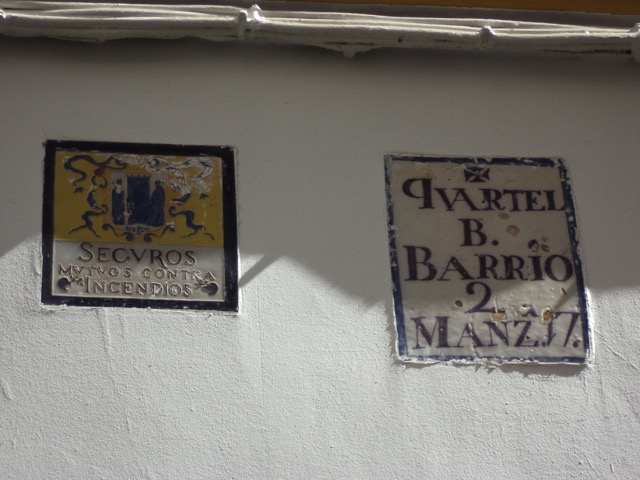 Like the famed patios of Cordoba, Sevilla’s Santa Cruz neighbourhood has lovely plazas with doors peaking into typical Andalucian homes with central patios, complete with columns and potted geraniums, bougainvillea and roses. Above the front doors many of the houses still have the white ceramic tile with the house numbers painted in blue. The oldest ones are undoubtedly shaped by hand. In the past, I have read that houses would also have a tile with a cross, a half moon or a Star of David, indicating whether the household was Christian, Muslim or Jewish. I suppose the Inquisition quickly put an end to that… Another interesting tile one can still see at the entrances are the ones indicating whether the house had a fire insurance or Seguro Contra Incendios. One can only speculate what the fire-crew did if a house did not have the tile to prove its insurance in place? Like the famed patios of Cordoba, Sevilla’s Santa Cruz neighbourhood has lovely plazas with doors peaking into typical Andalucian homes with central patios, complete with columns and potted geraniums, bougainvillea and roses. Above the front doors many of the houses still have the white ceramic tile with the house numbers painted in blue. The oldest ones are undoubtedly shaped by hand. In the past, I have read that houses would also have a tile with a cross, a half moon or a Star of David, indicating whether the household was Christian, Muslim or Jewish. I suppose the Inquisition quickly put an end to that… Another interesting tile one can still see at the entrances are the ones indicating whether the house had a fire insurance or Seguro Contra Incendios. One can only speculate what the fire-crew did if a house did not have the tile to prove its insurance in place?
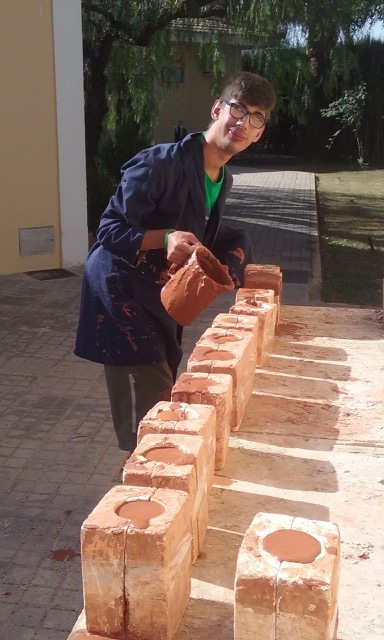 When we needed a street number sign for our house in Ronda, we decided to have something made in the tradition of Sevilla’s old house numbers. We had been told that Asprodisis, a local organization and centre for the mentally challenged, has a ceramic workshop that makes Ronda’s street signs. We headed over with a couple of photos from Sevilla and were welcomed by Eva, a hiking buddy of ours. She teaches the ceramic activities and helps the residents create the most amazing hand-made terracotta and clay trophies, signs, cups, plates and medals, to mention a few. Asprodisis also makes other crafts, has a professional laundry service used by many of Ronda’s hotels, an employment centre and also offer a complete catering service! We told Eva and her helpers that we wanted something charmingly imperfect with lots of personalidad, and that’s exactly what we got. When we needed a street number sign for our house in Ronda, we decided to have something made in the tradition of Sevilla’s old house numbers. We had been told that Asprodisis, a local organization and centre for the mentally challenged, has a ceramic workshop that makes Ronda’s street signs. We headed over with a couple of photos from Sevilla and were welcomed by Eva, a hiking buddy of ours. She teaches the ceramic activities and helps the residents create the most amazing hand-made terracotta and clay trophies, signs, cups, plates and medals, to mention a few. Asprodisis also makes other crafts, has a professional laundry service used by many of Ronda’s hotels, an employment centre and also offer a complete catering service! We told Eva and her helpers that we wanted something charmingly imperfect with lots of personalidad, and that’s exactly what we got.
Our house number is up now, looking ancient as it hangs, slightly askew. We cherish it because it isn’t a mass-produced tile bought in a tourist shop or something generic from a hardware store. Our number sign is something completely unique, made by hand with great care by handicapped workers in an admirable organization. We couldn't be happier with our Sevillan Judería-inspired house number, which perfectly compliments the eclectic Mexican-Norwegian heritage of the residents of the house, built on what once was an Arab burial ground in an Andalucian mountain town.
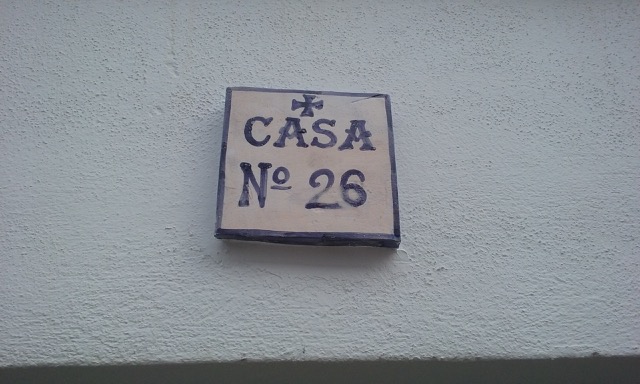
 3
Like
Published at 11:31 AM Comments (2)
3
Like
Published at 11:31 AM Comments (2)
AT THE RIGHT BAR AT THE RIGHT TIME – How to get things done in Southern Spain
Thursday, August 4, 2016
 A few months ago we were looking for a blacksmith to make us a firewood holder. In many countries ironmongers like shoemakers are virtually obsolete, yet here in Andalucía they are as busy as ever. We were told that the local smith had his shop just off the main square and if he wasn’t there, one could always find him in the bar. As predicted we found a heavily bolted door, so we headed for the bodega. No, el herrero wasn’t there yet, the waiter said, but if we waited un ratito he should be in. (I suppose he runs his business from his table?) True to the tale he arrived minutes later, ready for his beer and for business. We explained what we needed, showing him a sketch. The design and price were determined over the first cerveza and the deal was sealed by the time he ordered his third tubo. Passing the bar just a few days later, the smith called from his table, saying that our stand was ready. He could deliver it, he said, or we could pick it up. We assumed that he didn't mean from the bar… A few months ago we were looking for a blacksmith to make us a firewood holder. In many countries ironmongers like shoemakers are virtually obsolete, yet here in Andalucía they are as busy as ever. We were told that the local smith had his shop just off the main square and if he wasn’t there, one could always find him in the bar. As predicted we found a heavily bolted door, so we headed for the bodega. No, el herrero wasn’t there yet, the waiter said, but if we waited un ratito he should be in. (I suppose he runs his business from his table?) True to the tale he arrived minutes later, ready for his beer and for business. We explained what we needed, showing him a sketch. The design and price were determined over the first cerveza and the deal was sealed by the time he ordered his third tubo. Passing the bar just a few days later, the smith called from his table, saying that our stand was ready. He could deliver it, he said, or we could pick it up. We assumed that he didn't mean from the bar…
 Of course not all Andalucian business happens at the bodega. There are also the coffee bars. When we first moved to Spain, we made an appointment with one of the local banks to set up our accounts. The appointment was at 11 am. Being new in the place, we foolishly showed up before the scheduled time, which one simply never does down here in the deep South. The employee we should meet, whose desk was by the entrance with his very own line-up, was not there. Curiously, nor was the cue. Assuming he had nipped off to the loo or something equally urgent, we waited in front of his desk. Finally, another employee took mercy on us, asking if we needed help. We explained that we had an appointment with Señor so-and-so at 11. Being just 20 minutes past, we were told not to worry. He had just gone for breakfast and would surely be back by noon. Being seasoned guiris (a somewhat derogatory name for foreigners), we now never make appointments at breakfast time, knowing perfectly well that all employees disappear for their God-given-right-to-eat-breakfast-during-work-hours for at least 60 minutes between 10 and noon-ish. We also have learned to avoid the post office during breakfast hours, when the line-ups are dismal and only one wicket is open, with a very cranky employee anxious to go for breakfast. So, what to do? Should ones business be too urgent to wait, one can go to the employees’ coffee-bar-of-choice and endeavour to get the answer to ones question ort approval of ones loan over a café con leche. Of course not all Andalucian business happens at the bodega. There are also the coffee bars. When we first moved to Spain, we made an appointment with one of the local banks to set up our accounts. The appointment was at 11 am. Being new in the place, we foolishly showed up before the scheduled time, which one simply never does down here in the deep South. The employee we should meet, whose desk was by the entrance with his very own line-up, was not there. Curiously, nor was the cue. Assuming he had nipped off to the loo or something equally urgent, we waited in front of his desk. Finally, another employee took mercy on us, asking if we needed help. We explained that we had an appointment with Señor so-and-so at 11. Being just 20 minutes past, we were told not to worry. He had just gone for breakfast and would surely be back by noon. Being seasoned guiris (a somewhat derogatory name for foreigners), we now never make appointments at breakfast time, knowing perfectly well that all employees disappear for their God-given-right-to-eat-breakfast-during-work-hours for at least 60 minutes between 10 and noon-ish. We also have learned to avoid the post office during breakfast hours, when the line-ups are dismal and only one wicket is open, with a very cranky employee anxious to go for breakfast. So, what to do? Should ones business be too urgent to wait, one can go to the employees’ coffee-bar-of-choice and endeavour to get the answer to ones question ort approval of ones loan over a café con leche.
 I am not claiming that all business at these southern latitudes happen at the bar. Our accountant for one only has meetings in her office, though she is often gone for coffee when we arrive. Many will do their business behind office doors, but it is surprising how often someone will bring a contract, a wedding invitation or a medical record to the bar. Bars are Andalucía’s backbone and many peoples’ second home. Our local bars open from 9-ish in the morning, with the regulars coming in for their first Anis shortly after. The same people seem to close the bar and its business some time after 3 am. The street sweeping crews have their regular bars where they take a break to discuss rubbish and politics. Politicians meet at bars to plan further procedures. Meetings with lawyers, architects, inspectors and undertakers are frequently held at a bar. If one wants to get a second medical opinion about a blood test, X-ray or an MRI in Andalucía, one could bring the papers to the bar. Sooner or later a doctor will arrive, willing to discuss the findings over a wine or a coffee. People bring family, friends and dogs to the bar. Baptisms and first communions with babies and youngsters will be celebrated at the local bodega. News about the passing of a local resident is often announced in print by the bar entrance, or if space is tight on the beer fridge. Bars are where one goes to inform oneself about funerals, weddings, divorces, health matters, building projects, political upheavals, family interventions, scandals and local gossip. Business deals are sealed in Andalucian bars all the time and heaven help those who do not frequent bars, as how else would they get new clients and hear about new projects. I am not claiming that all business at these southern latitudes happen at the bar. Our accountant for one only has meetings in her office, though she is often gone for coffee when we arrive. Many will do their business behind office doors, but it is surprising how often someone will bring a contract, a wedding invitation or a medical record to the bar. Bars are Andalucía’s backbone and many peoples’ second home. Our local bars open from 9-ish in the morning, with the regulars coming in for their first Anis shortly after. The same people seem to close the bar and its business some time after 3 am. The street sweeping crews have their regular bars where they take a break to discuss rubbish and politics. Politicians meet at bars to plan further procedures. Meetings with lawyers, architects, inspectors and undertakers are frequently held at a bar. If one wants to get a second medical opinion about a blood test, X-ray or an MRI in Andalucía, one could bring the papers to the bar. Sooner or later a doctor will arrive, willing to discuss the findings over a wine or a coffee. People bring family, friends and dogs to the bar. Baptisms and first communions with babies and youngsters will be celebrated at the local bodega. News about the passing of a local resident is often announced in print by the bar entrance, or if space is tight on the beer fridge. Bars are where one goes to inform oneself about funerals, weddings, divorces, health matters, building projects, political upheavals, family interventions, scandals and local gossip. Business deals are sealed in Andalucian bars all the time and heaven help those who do not frequent bars, as how else would they get new clients and hear about new projects.
 When we initially were looking for a place to rent in Ronda we went through a proper rental agency. A couple of years later, needing a place while constructing our house, we knew better and went straight to the neighbourhood’s key information hub - the local bodega. We ordered a couple of tintos and started asking around. Within minutes, we had several options. The sister of one of the regulars, always sitting at the same table with the same red nose, had a 7-bedroom house for rent in the historic centre. Maybe a tad too big for two, we said. The third cousin of one of the waiters had a place in the campo. Taking the matters into her own hands, the bar owner called a landlady around the corner. As there was no answer, she hurried off down the street on high heels to arrange an immediate viewing. That’s instant action, I’d say! When we initially were looking for a place to rent in Ronda we went through a proper rental agency. A couple of years later, needing a place while constructing our house, we knew better and went straight to the neighbourhood’s key information hub - the local bodega. We ordered a couple of tintos and started asking around. Within minutes, we had several options. The sister of one of the regulars, always sitting at the same table with the same red nose, had a 7-bedroom house for rent in the historic centre. Maybe a tad too big for two, we said. The third cousin of one of the waiters had a place in the campo. Taking the matters into her own hands, the bar owner called a landlady around the corner. As there was no answer, she hurried off down the street on high heels to arrange an immediate viewing. That’s instant action, I’d say!
We may not run a business from the local bar just yet, but we know where the deals are made and where one needs to go to get things done in southern Spain. There is no telling what can happen if one is at the right bar at the right time…

 3
Like
Published at 4:27 PM Comments (2)
3
Like
Published at 4:27 PM Comments (2)
Spam post or Abuse? Please let us know
|
|